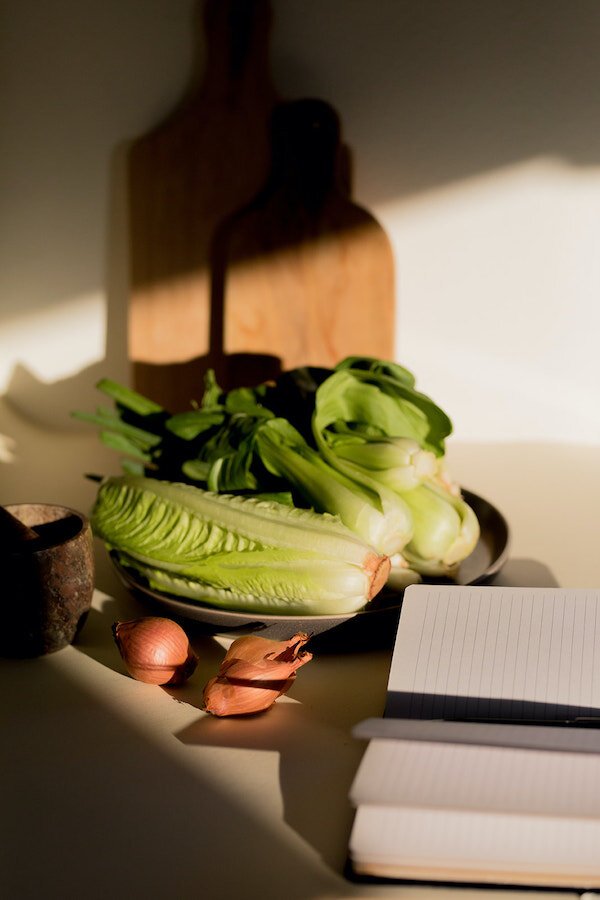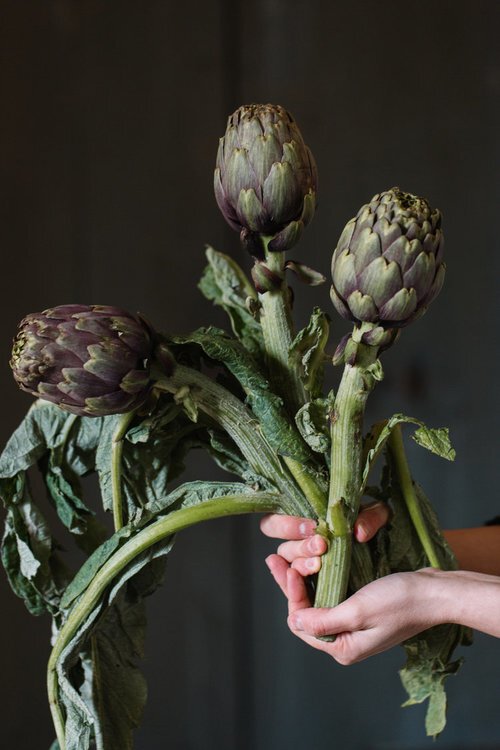
How To Eat Vegan On A Budget
How much does going vegan cost?
Growing up in the ‘90s and early 2000s, my family followed a relatively strict plant-based diet. In those days, there were few meat alternatives in grocery stores, much less dairy-free takes on cheese (or edible ones, at that). I vividly remember visiting the local Shoprite, baffled by the dozens of salamis and hams next to one lonely veggie burger. (Shout out to Morningstar, my day ones!)
But over the last decade, vegetarian- and vegan-inspired diets and options have vastly expanded, thanks to a rise in mainstream cookbooks and brands like Impossible Foods dedicated to plant-based products. If you’ve ever toyed with the idea of incorporating vegan meals into your diet, it’s more delicious, inclusive, and affordable than ever before.
I’ve heard it all when it comes to plant-based foods: Isn’t it more expensive? Does it even taste good or similar to what I’m used to? So before we dive into the specifics of how to eat vegan on a budget, let’s share some feedback from the experts (and from my personal experiences) to be clear on what vegan foods and the associated costs of a plant-based diet can be.
Myth: Plant-based products are more expensive.
The number one misconception is that eating vegan is more expensive. While meat- and dairy-based alternatives (like almond milk, plant-based sausage, or veganized takeout) can be costly, the bulk of raw vegan-friendly items (like legumes and greens) are actually very affordable. The same is true in my own life; my husband eats meat while I do not, and comparatively, my costs are almost always lower than his.
“The bulk of raw vegan-friendly items are actually very affordable.”
David Trotta, co-owner of Jersey City-based Whealth Kitchen, notes that “the items we associate with vegan cooking culture like quinoa and coconut oil are far from local and can eat up your budget quickly.” In this case, if you can shop locally and seasonally or go through CSAs, community gardens, or produce boxes, that will cut costs even further.
Myth: Vegan food isn’t filling.
Despite the memes, vegan food isn’t rabbit food. 😉 In fact, veggie-friendly protein sources like beans and seeds are typically more filling and nutritious per weight than meat. Plant-based chef and founder of Happy Bellyfish Cooking School Anastasia Sharova says, “One of the most nutrient-dense foods and a great source of protein is tempeh (20 grams of protein in 100 grams)… I strongly recommend it to anyone who is looking for budget-friendly vegan foods.” So while simple salads may not suffice for every meal, it’s absolutely possible to walk away satiated from plant-based dishes without overspending.
Myth: Vegan dishes are boring and bland.
With unassuming ingredients like tofu, it’s easy to assume vegan meals lack flavor, but that doesn’t have to be the case at all. My husband may be the superior sous chef in our household (I have a fear of accidentally sawing a finger off, what can I say?), but I am far better at creating flavors, thanks to years of spicing up veggie-friendly dishes.
“Thoughtfully shifting your diet isn’t going to happen overnight, so look at plant-based options for dishes you currently enjoy.”
Superfoods like mushrooms, lentils, and sweet potatoes come packed with flavor, and Sharova recommends “being generous with spices, herbs, and seasonings. You can also explore different textures of dishes to liven up a dish.” Investing in a few quality condiments may be pricier upfront, but they will keep your food tasting delicious for the long haul.
Thoughtfully shifting your diet isn’t going to happen overnight, so look at plant-based options for dishes you currently enjoy. “Veganizing” a dish you already love means you’re more likely to continue than starting new dishes from scratch. Trotta shares a perfect example: “Think shepherd’s pie, but replace the ground meat with a mix of caramelized onions and lentil… It’s actually less expensive per plate!”
How do I shop on a tight budget?
Start with a meal plan focused on seasonal options:
Out of the dozen experts I spoke with, almost all of them suggested making a meal plan before grocery shopping. Planned recipes can be especially helpful for introducing fresh ingredients into your diet. There are countless easy vegan meals that can be made with just one bag of beans and basic produce. As Trotta earlier mentioned, it is also simpler to plan meals around local and seasonal foods. If you’re not sure what’s in your area, here’s a helpful guide.
There are tons of resources out there already on plant-based dishes. Here are some of our favorite vegan recipes, meat substitutes, and vegetarian and vegan cookbooks to help any beginner. And, because we’re still in a pandemic and we can all use some nurturing, here are the best vegan takes on comfort food.
Consider bulk and frozen options:
Another big tip for budget-friendly ingredients is to buy in bulk since legumes and whole grains are the basis behind (or rather, under) most easy vegan meals. It’s entirely possible to get by with $40-$50 a week (or even less), depending on your needs and eating habits.
“If you want to easily enhance the flavors of dishes, look to fresh herbs, high-quality olive oils, and condiments.”
Vicky Cohen and Ruth Fox of May I Have That Recipe recommend finding bulk goods at produce and farmers markets, as well as Asian, Indian, or Latino groceries, since these cuisines have a more plant-based foundation. Other filling, nutritious, and inexpensive ingredients include quinoa, sprouted breads, nuts, and avocados. If you want to easily enhance the flavors of dishes, look to fresh herbs, high-quality oils, and condiments.
Don’t discount frozen foods either! “Frozen food items are made to last for a longer time, so you can store them to consume whenever you want,” says Vicky Cano, a chef from Mealfan. “Buying frozen vegetables and vegan [goods] means no food waste; this will save you money as you get more food for almost the same amount of money.”
Double-check the label:
If you’re not 100 percent sure that an item is vegan, double-check the label for hidden dairy, gelatin (sometimes made with animal parts), or other animal by-products. Many experts denote that products may be vegan but produced in a factory with eggs or dairy, which is another reason to double-check labels. Luckily, most chains and grocery stores designate veggie- or vegan-friendly sections for ingredients, making finding what’s best for you very straightforward.
“Products may be vegan but produced in a factory with eggs or dairy, which is another reason to double-check labels.”
A win for the planet & your health
For 10+ years, the United Nations (UN) has repeatedly warned of the effects of climate change and how global warming threatens our everyday life. In a special report from the Intergovernmental Panel on Climate Change commissioned by the UN, researchers urge readers to shift to plant-based diets as much as possible to combat these changes.
“If everyone turned to largely plant-based diets, we could reduce greenhouse gas emissions by nearly 70 percent.”
That’s because the animal agricultural industries account for the majority of the world’s freshwater supply, carbon dioxide, and global emissions. This stress on our planet is unsustainable. But if everyone turned to largely plant-based diets, we could reduce greenhouse gas emissions by nearly 70 percent… and likely be a bit healthier too.
When vegan diets are made up of whole foods like grains, fruits, and vegetables (versus processed foods), they’re more nutrient-rich than eating meat or animal byproducts. According to multiple studies, there are also direct correlations between these diets and lower risks of type 2 diabetes, heart disease, high blood pressure, and even prostate cancer.
However, “turning to veganism” isn’t necessarily possible for everyone everywhere, given the lack of affordability and availability of certain foods. Ethnic communities at higher risks for non-communicable diseases are also the ones most restricted from access to fresh fruits and vegetables and affordable protein sources. At large, states and countries must also work towards policy changes that make vegan options more accessible to the masses.
“Just because a plant-based diet is cruelty-free towards animals, other foods may not necessarily be ‘cruelty-free’ for humans.”
Lastly, keep in mind that just because a plant-based diet is cruelty-free towards animals, other foods may not necessarily be “cruelty-free” for humans (i.e., think of cheap labor for fruits). So if you are hoping to switch to veganism, you can still ask vital questions about the supply chain, which may have its own ethical issues.
Remember: It’s a process.
Sarah Galletti of Tattooed Chef reminds us, “For those just beginning their plant-based journey, know that it’s okay to start small.” Smaller, more affordable changes like changing your coffee creamer in the morning away from dairy milk or using mushrooms in a dish instead of beef can be important first steps in exploring vegan options. “It’s more sustainable if it’s something you gradually build up and incorporate as a part of your lifestyle, so take it slow if you need to!”
Have you incorporated vegan dishes into your diet? Share your best budgeting or meal planning tips below! 🍽️
Henah Velez (she/her) is an Editor at The Good Trade. She holds a Master’s in Social Entrepreneurship and is a proud Rutgers grad. Originally from NJ, Henah’s now in Santa Barbara, CA, where she loves shopping small, hanging with her pets, or traveling. Say hi on Instagram!




